Final presentations for Multicultural Understanding through Art, a 4th-quarter course at Tokyo Tech, were held on January 28. Under the leadership of two art experts, the event aimed to share the works created by four teams of 13 students in the course with the broader public, and to encourage exchange and dialogue born from the diverse perspectives and interpretations regarding art.
Due to a sudden spread of COVID-19, the presentations were abruptly switched from a face-to-face format to Zoom on the day of the event. Each team had 15 minutes to present the results of their continuous questioning of what art is and how it relates to multicultural understanding. The audience and lecturers on campus watched the teams’ creative works projected on a large screen via Zoom. The works created and presented by each team were as follows.
Team Confused: “Fusion of physical expression, music, and images inspired by Mandala”
A modern Mandala formed from team members’ hands played in the background, and all the participants joined in by clapping their hands while absorbing the unique visual images and rhythm together.
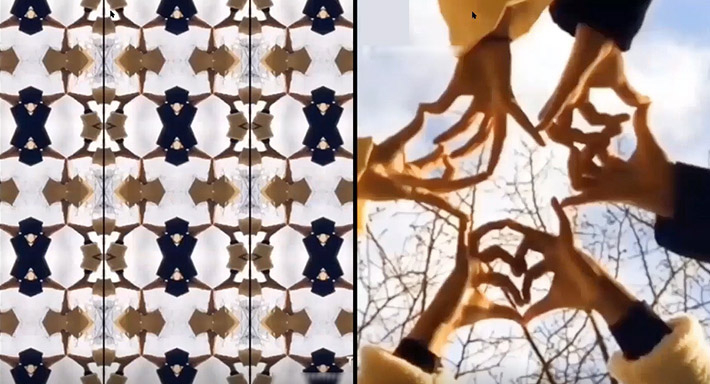
Work by Team Confused
Team Noisy: “A study of contact between sight, hearing, and touch”
Focusing on perception, the team studied how the senses of “quiet” and “noisy” are created, asking the audience questions while using props such as paper, a ping pong ball, and stones, and examining the responses posted on the Zoom chat.
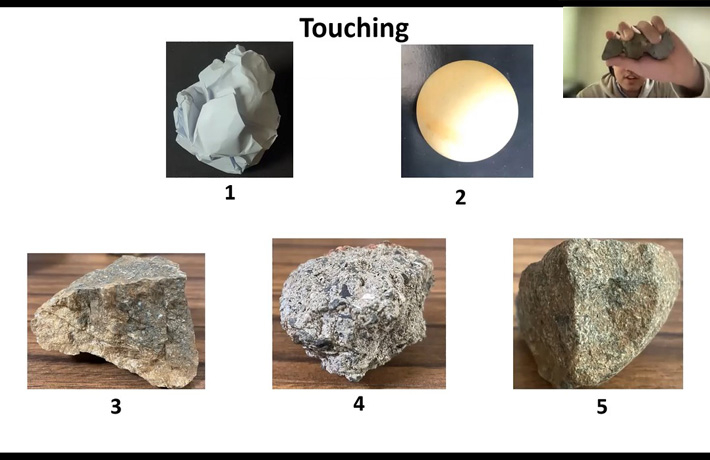
Work by Team Noisy
Team Bvaya: “An association game with different languages”
In a group, one person listened to the sounds of a spoken language they were not familiar with, wrote the sounds on the board as they heard them, guessed the meaning, and then passed on the task to the next person. The team also asked whether the board could be a work of art and exchanged opinions with the audience.
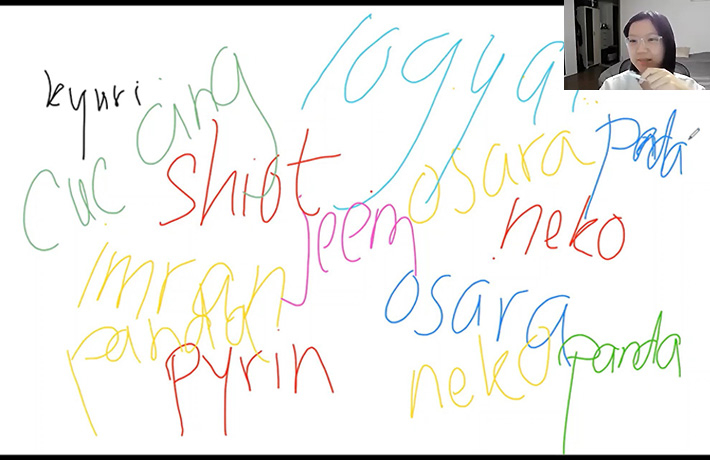
Work by Team Bvaya
Team AIS: “Creating a collaborative collage with the audience”
Using an online application, the audience participated in the creation of a collage, collaborating to create a single human body.
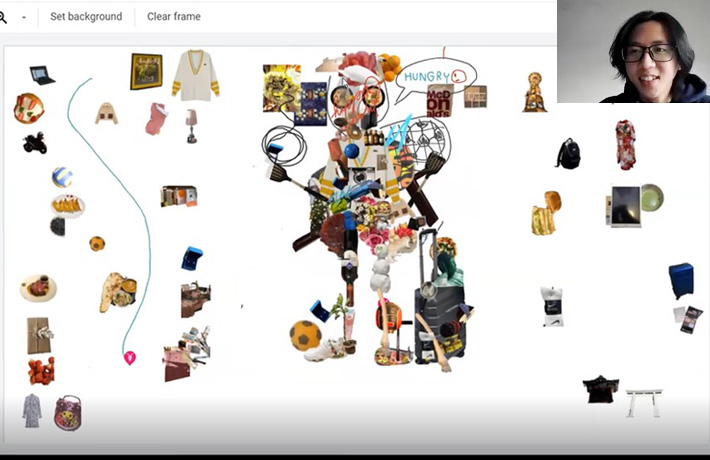
Work by Team AIS
Virtual event visitors commented that each team’s presentation was unique, and that they would love to see a face-to-face event next time. Some also said they would have enjoyed the event even more had they known about the process of creating the works. Despite the challenges of working online, the artworks instigated a meaningful dialogue not only between the students who created them, but also between the creators and the viewers.
Comments from course students
Narumi Iiboshi
1st year, School of Environment and Society
In this class, I had many chances to use English through group discussions and presentations. Group members were not native English speakers, so we found it difficult to communicate well. I couldn’t give my opinions as I thought and I was frustrated. We had many difficulties like having the presentation online, but cooperating with group members was a good experience for me. It was a very short time, but I could enjoy the course with the lecturers for this class and the students from abroad. Thank you all!
Maoko Fujisaki
2nd year, Transdisciplinary Science and Engineering
The lecture was definitely amazing. The former half, in which everyone presented one picture from within the same topic, made me realize that the approaches toward the theme were much more diverse than I expected. In the latter half, we worked hard to finalize our presentation. The advice from Reiko-sensei to not only fuse our differences but also come up with completely new artwork and value made us confused, and we struggled at first. In the end, through close communication with international student members, we created a modern mandala as if the ancient mandala still remained for prayers in our modern era. It felt great!
Ireen Tasnim
1st year, School of Environment and Society
This course is undoubtedly a unique one. I must say, people who belong to STEM often lose their connection with the world of art. This course feels like an innovative attempt to bridge the gap. After hours of talking about us, what art is, and how it can be dedicated to others, we were asked for a final presentation. The four groups made a phenomenal performance, I must say, but that is only because our senseis pushed us constantly to think out of the box.
Masayuki Kawai
Video Artist / Theorist
Take a chance. Open your eyes and try to see what you can’t see. Release your voice (unconsciously) and try to say what you can’t say. Move your hand (intuitively) and try to make what you can’t make. Believe in inspiration; doubt your discipline. Rarely you’ll win; mostly you’ll lose. You have plenty of problems and few solutions. Now is the time to reach beyond! Open, connect, move, and try again. Keep taking chances.
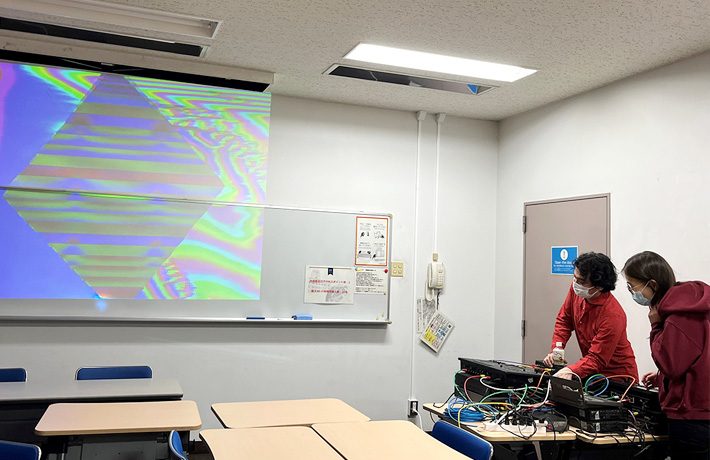
Demonstration by Masayuki Kawai
Reiko Setsuda
Curator at Fondation d’entreprise Hermès
In this class, we aimed to deepen multicultural exchange through art. We were able to share and discuss our different backgrounds, our thoughts and ideas about art, and further move on to collaborative group works, all of which were very individual and unique. Looking back at some of the fragments from the classroom such as the texts, images, and expressions of each participant, the students all provided beautiful moments — when you looked a little confused when you were discussing topics, your speed when you started to move forward, and your outstanding abilities to come up with a resolution at the end.
Art has many aspects, but it is a special energy that is tied to personal emotions, and therefore also to politics and power. Throughout history, it has been a means of resistance to the question of human dignity or existence, and that is why it has been redefined as something that should be open to all. If, today, we were able to engage in an open dialogue about or through art with people from different countries at Tokyo Tech, please remember that this is because history has made it possible.
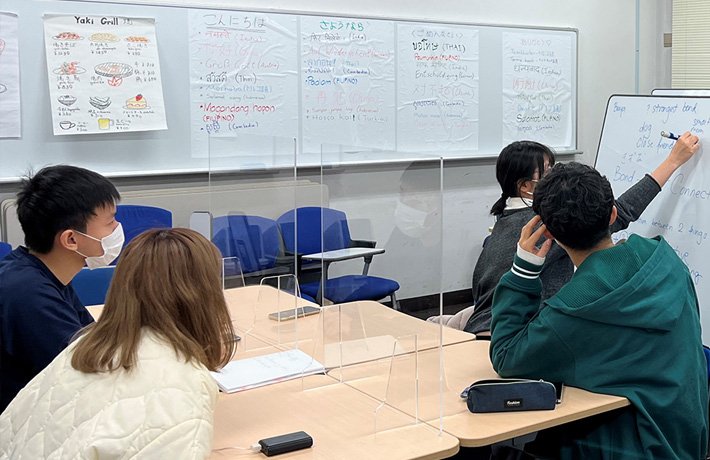
Group working on their idea in class
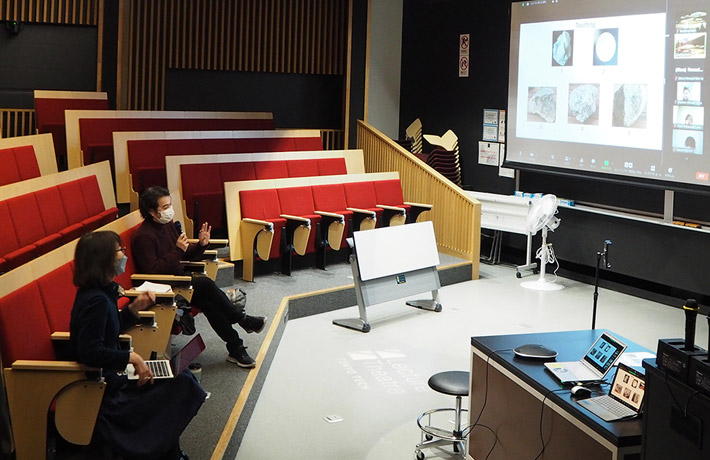
Lecturers attending from Tokyo Tech Lecture Theatre together with visitors online
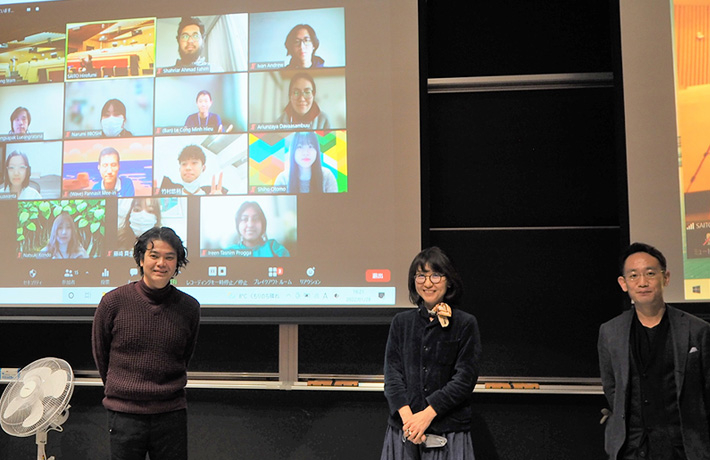
Group photo after presentations
Tokyo Tech continues to explore ways in which students, faculty, staff and the broader public can fuse the study of STEM with the arts to create fresh, exciting ideas and new value.




